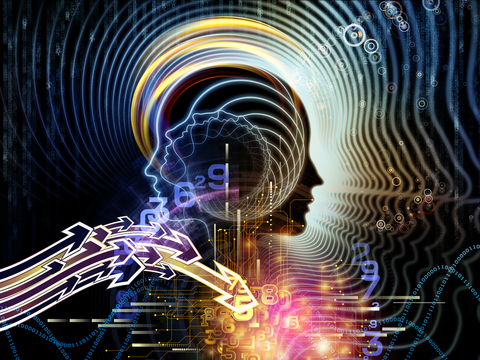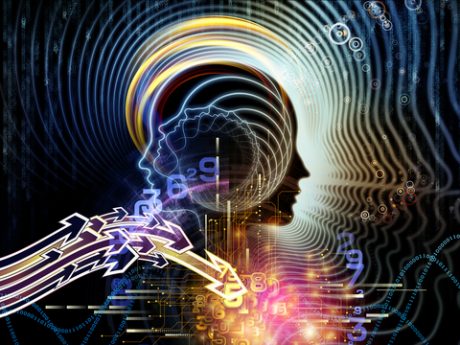
 Memory is the retention of information over time. Although the word memory may conjure up an image of a singular, “all-or-none” process, it is clear that there are many types of memory, each of which may be somewhat independent of the others.
Memory is the retention of information over time. Although the word memory may conjure up an image of a singular, “all-or-none” process, it is clear that there are many types of memory, each of which may be somewhat independent of the others.
One way to describe memory is by reference to the form it takes, that is, the different ways memory may be assessed: recall, recognition, and paired associates.
Ways of memorising
Recall
The most popularly studied kind of memory is recall. Recollection of a telephone number you have just heard, a list of items you are to purchase at the store, or a list of dates you learned in history class are all examples of recall.
Recognition
A second type of memory is recognition, which is generally easier than recall. For example, a history teacher gives four dates, and learners are to choose the one that goes with the specific historical event.
People often underestimate just how powerful their recognition memory is. Roger Shepard showed hundreds of photographs of faces to adults and later presented them with a recognition problem: they were to identify which face in a pair they had previously seen in his collection. With literally hundreds of such test pairs, recognition accuracy was between 90 and 100 percent for most subjects.
Paired associates
Another kind of memory is called paired associates. It is a person’s ability to memorise a list of paired items, such as pictures and names, common objects and nonsense syllables, or words and corresponding visual scenes.
Memory as the flow of information
One prominent view conceives memory as the flow of information through the mind. In a number of statements about this view, three broad stages of information processing can be distinguished. First is the sensory register, a very short-term sensory memory of the event. At the second level is short-term or working memory. The third level is working memory.
Sensory register
Roughly speaking, the sensory register concerns memories that last no more than about a second. If a line of print were flashed at you very rapidly, say, for one-tenth of a second, all the letters you can visualise briefly after that presentation constitute the sensory register. This visualisation disappears after a second.
Short-term memory and working memory
When you are trying to recall a telephone number that was heard a few seconds earlier, the name of a person who has just been introduced, or the substance of the remarks just made by a teacher in class, you are calling on short-term memory or working memory. This lasts a few seconds to a minute; the exact time may vary.
You need this type of memory to retain ideas and thoughts as you work on problems. In writing a letter, for example, you must be able to keep the last sentence in mind as you compose the next. To solve an arithmetic problem like (3 X 3) + (4 X 2) in your head, you need to keep the intermediate results in mind (i.e., 3 X 3 = 9) to be able to solve the entire problem.
The distinction between short-term memory and working memory is an ongoing debate, as the terms are often used interchangeably. Some scholars claim that some manipulation of remembered information is needed to qualify the task as one of working memory. Repeating digits in the same order they were presented would thus be a short-term memory task while repeating them backward would be a working memory task.
Another viewpoint is that of Nelson Cowan, who says short-term memory refers to the passive storage of information when rehearsal is prevented with a storage capacity of around four items. When rehearsal is allowed and controlled attention is involved, it is a working memory task, and the capacity is closer to seven items.
Long-term memory
Long-term memory lasts from a minute or so to weeks or even years. From long-term memory, you can recall general information about the world you learned on previous occasions, memory for specific past experiences, specific rules previously learned, and the like.
Our senses are involved too
Visual memory
Visual memory involves the ability to store and retrieve previously experienced visual sensations and perceptions when the stimuli that originally evoked them are no longer present. That is, the person must be capable of making a vivid visual image in his mind of the stimulus, such as a word, and once that stimulus is removed, be able to visualise or recall this image without help.
Various researchers have stated that as much as 80 percent of all learning occurs through the eye, with visual memory as a crucial aspect of learning.
Most learning-disabled students have serious deficiencies in visual memory, states Addie Cusimano in her book Learning Disabilities: There is a Cure:
Children who have not developed their visual memory skills cannot readily reproduce a sequence of visual stimuli. They frequently experience difficulty in remembering the overall visual appearance of words or the letter sequence of words for reading and spelling. They may remember the letters of a word but often cannot remember their order, or they may know the initial letter and configuration of the word without having absorbed the details, that is, the subsequent letters of the word. As a result, these students fail to develop a good sight vocabulary and frequently experience serious writing and spelling difficulties.
Auditory memory
A weakness in auditory memory can have also have consequences in the realm of learning, says Cusimano.
Auditory memory involves taking in information presented orally, processing it, storing it in one’s mind, and then recalling what one has heard. Basically, it involves the skills of attending, listening, processing, storing, and recalling. Because students with auditory memory weaknesses pick up only bits and pieces of what is being said during a classroom lecture, they make sense of only a little of what the teacher says. Afterwards, they can recall only a small amount or none of what was said.
Students with auditory memory deficiencies will often experience difficulty developing a good understanding of words and remembering terms and information presented orally, for example, in history and science classes.
These students will also experience difficulty processing and recalling information that they have read to themselves. When we read, we must listen and process the information we say to ourselves, even when we read silently. If we do not attend and listen to our silent input of words, we cannot process the information or recall what we have read. Therefore, even silent reading involves a form of listening, says Cusimano.
A poor auditory short-term memory is often the cause for a child’s inability to learn to read using the phonics method, says Cyndi Ringoen, a neurodevelopmentalist. “Phonics is an auditory learning system, and it is imperative to have a sufficient auditory short-term memory in order to learn, utilize and understand reading using the phonics method.”
Don’t forget sequential memory
Sequential memory requires items to be recalled in a specific order. In saying the days of the week, months of the year, a telephone number, the alphabet, and counting, the order of the elements is paramount.
Visual sequential memory
Many learners with reading difficulties have poor visual sequential memory, i.e., a poor ability to perceive things in sequence and then remember the sequence. Naturally, this will affect their ability to read and spell correctly. After all, every word consists of letters in a specific sequence. In order to read, one has to perceive the letters in sequence and also remember what word is represented by that sequence of letters. Changing the sequence of the letters in name can make it mean or amen.
Auditory sequential memory
Some also have poor auditory sequential memory and, therefore, may be unable to repeat longer words orally without getting the syllables in the wrong order, for example, words like preliminary and statistical.
Edublox improves memory
Edublox is an educational method that integrates cognitive training, reading or maths tutoring, and solid learning principles. Edublox assists students in becoming life-long learners and empowers them to realise their highest educational goals. While not a quick fix, Edublox programmes can permanently alleviate the symptoms of learning difficulties and disabilities like dyslexia.
At Edublox, we follow a holistic approach and improve iconic memory, short-term memory, working memory, long-term memory, visual memory, auditory memory, and sequential memory.
Contact your closest Edublox branch for an assessment and help.







Leave a Reply